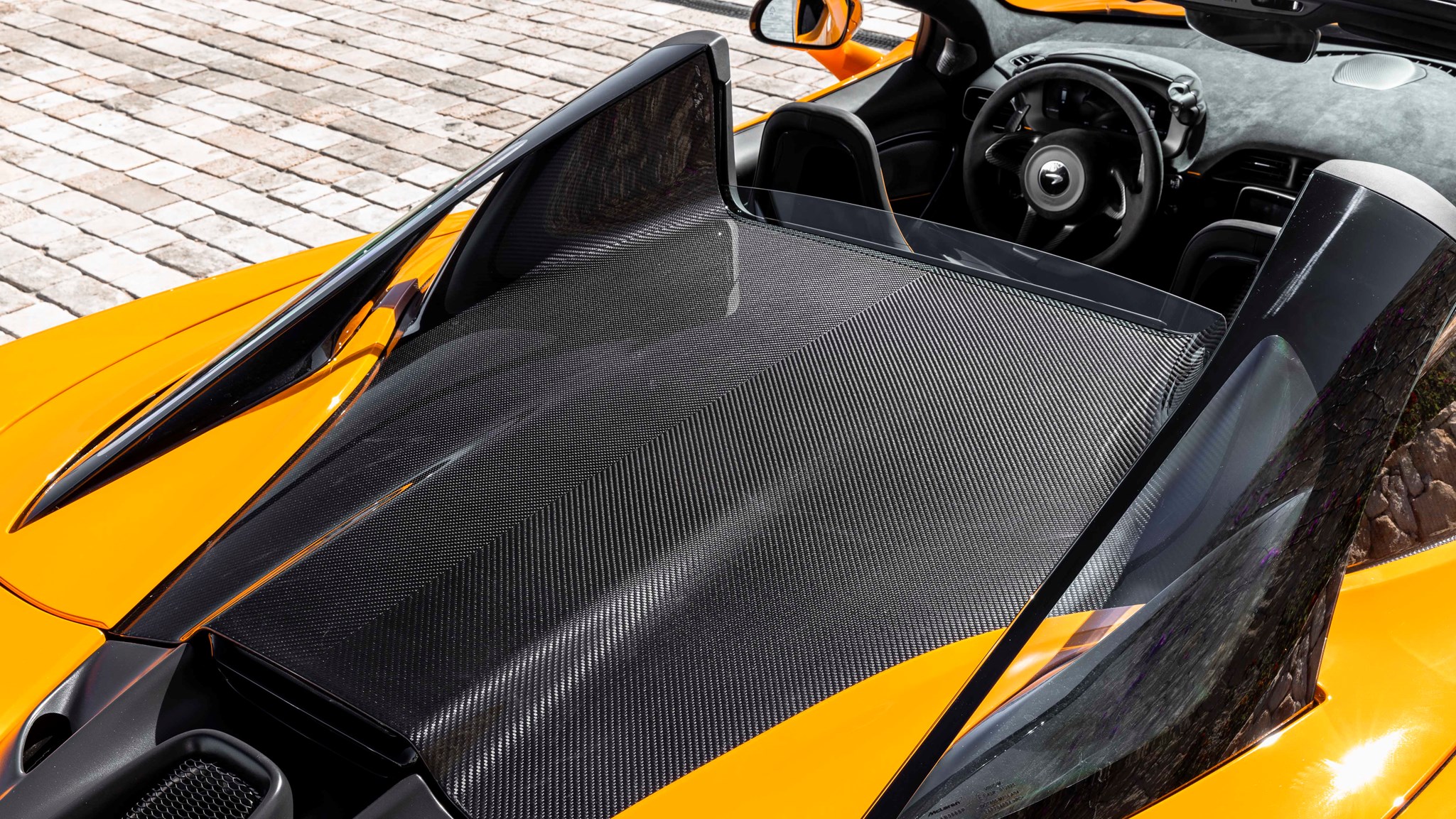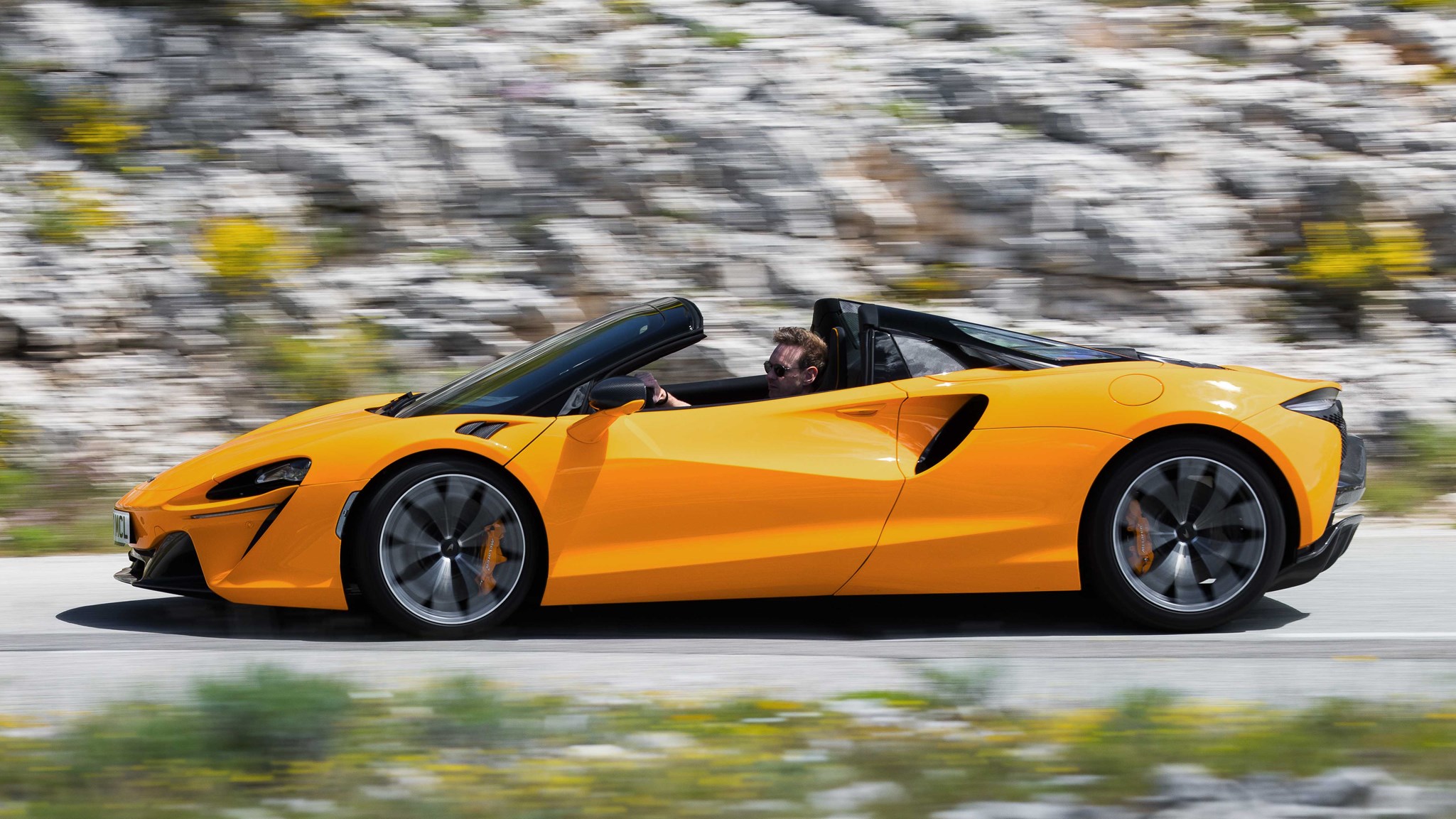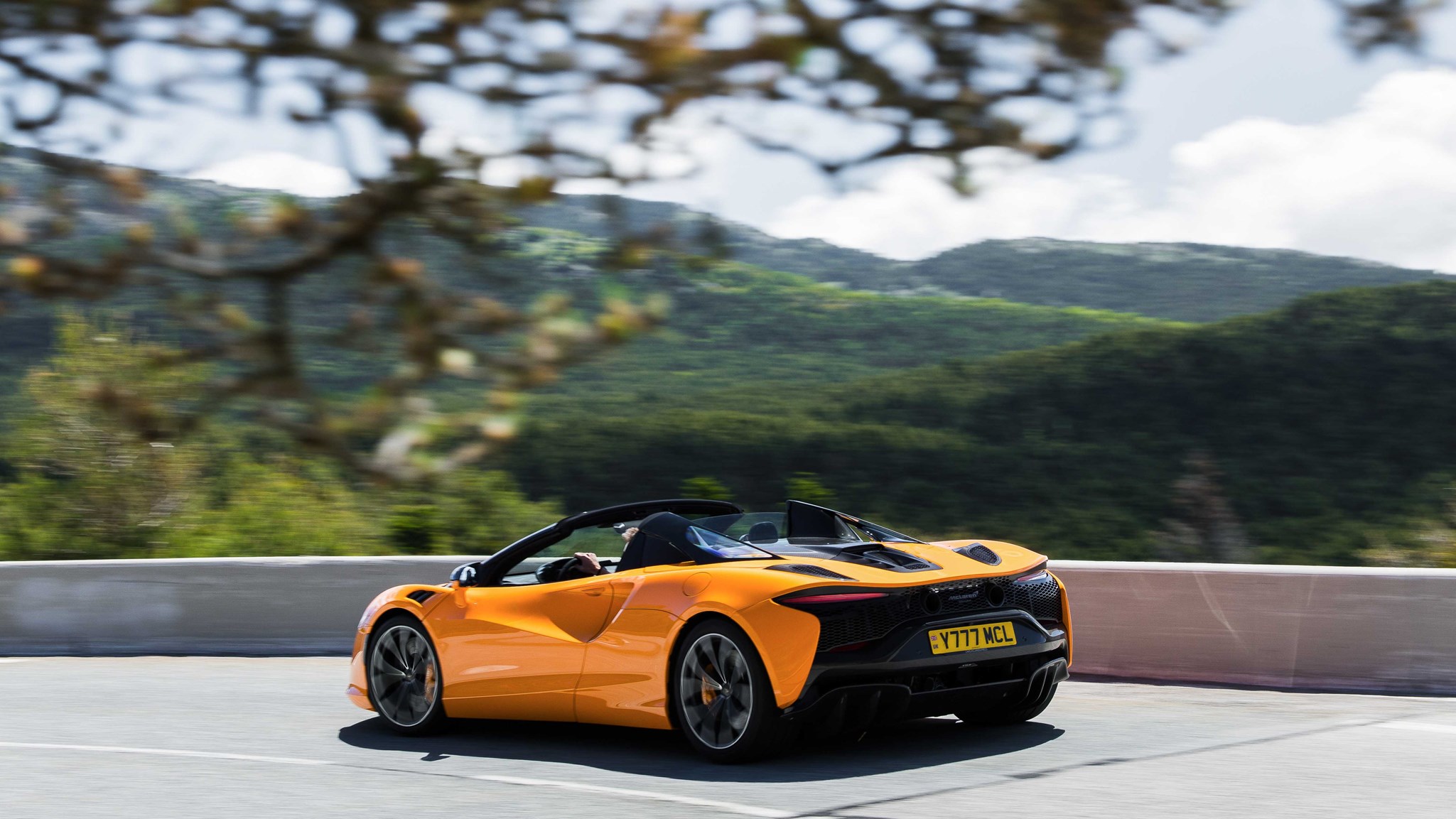- McLaren Artura Spider driven on road
- Retractable hard top carbon roof folds in just 11 seconds
- Priced from £221,500
McLaren’s new Artura Spider isn’t just an expansion of the model range, it’s an opportunity at a second chance. Because while on the face of it the big story is the convertible roof, there’s so much more going on under the skin. See, the Artura Spider coincides with a 2025 model year update that means almost every dynamic change on the convertible has also been carried over to the coupe.
One might ask – ‘but why would they do that if there’s nothing wrong with the Artura in the first place?’ Well, put simply, the Artura thus far hasn’t been the car it could or should have been for McLaren. That’s not to say it was bad – far from it – but after a turbulent conception and launch to market many felt there was more to come from McLaren’s plug-in hybrid supercar.
What’s new on the Artura?
Quite a lot. Almost no part of the Artura was safe from revision. For starters, power is up 19bhp to 690bhp with the source of the gain entirely down to a remap of the internal combustion unit. This means that existing Artura owners can visit their local dealership and obtain the extra ponies free of charge. The electric element isn’t completely untouched however, with an additional two miles of EV range (bringing the total up to 21 claimed miles) now available.

More significant is how the powertrain is affixed to the chassis. McLaren’s engineers are very proud of the new, stiffer powertrain mounts as, despite it not sounding like the most exciting advancement, the claimed improvement is significant. Further revisions have been made to the eight-speed gearbox, where a new pre-fill feature pressurises hydraulic fluid in the transmission to deliver 25% faster shift speeds.
What’s more, an optional sports exhaust (featuring a symposer that channels natural – not reproduced – sound into the cabin) is available, but even the standard system has been revised and now features an upward conical shape to the tailpipes in order to improve the engine note at mid and high revs.

Onto the chassis and McLaren claims to have made big strides with the damping and brakes in particular. For starters, new damper valves and faster DCUs (domain control units) provides quicker responses to drive input and changes in road surface. Oh, and there’s a new burnout mode called ‘Spinning Wheel Pull-Away’. Obviously.
Finally, the brakes get new cooling ducts and recalibrated ABS settings meaning better feel (in theory), more durability and a short stopping distance of 31m from 62mph. It’s a comprehensive list of chassis changes that suggests McLaren knew there was plenty of scope for improvement on the original Artura.
Have the changes worked?
In a nutshell – yes. It’s not a night-and-day transformation from the original Artura, but there’s a clear shift in how polished the car feels from top to bottom. For starters, the ride quality is excellent. It certainly wasn’t bad before, but the quality of the damping and compliance that it offers is deeply impressive.
And this isn’t at the expense of body control. Send the Artura into a corner and the steering and direction changes feel taught and cohesive. McLaren explains that that new engine mounts assist by helping to bring the initial (from the chassis) and secondary movement (from the powertrain) closer together when the car goes over a bump or responds to an input for example. It manifests itself in delivering more confidence in the chassis and a greater sense of agility.

Interestingly, the Artura Spider weighs in at 1,560kg which is lighter than all of its rivals, yet on the way into corners (at road speeds at least) it’s hard to truly feel this saving. Whereas the tech on a Ferrari 296 GTS makes it feel like it’s more agile and on its toes, the Artura delivers a more tied down – and ultimately less dynamic – feel.
Another area that’s successfully been improved is the brake feel. Previously, it was disappointing to see that – despite the Artura not harvesting energy from the brakes – the pedal feel was inferior to a Ferrari 296. Now it’s much more of a match especially as you begin to really lean on the pedal.
Traction from the rear wheels is formidable, so it shouldn’t take long to eye corner exit and get back on the power. Once you do, the redesigned exhaust system is, again, an appreciable improvement. Run through the gears and there’s a greater sense of excitement and character to the exhaust note, particularly as you run past 4.5k rpm.

As you reach the top end (peak power is at 7.5k rpm), there’s still work to be done on achieving an engaging crescendo. Ferrari’s plug-in hybrid V6 also struggles with this so McLaren aren’t alone, but for a mid-engined supercar there should be more incentive to ring out every last inch of the powertrain.
How does it fair as a convertible?
Very well, on the whole. Modifications to the aero for the Spider model includes new aerothermal tech that features four separate ducting systems in order to cool the powertrain and reduced buffeting with the roof down. What’s more, the roof shape has been designed to channel air towards the repositioned chimney in order to accelerate the flow of hot air from the powertrain. Small gurneys on the windscreen header also work to improve refinement for those in the cabin.

Overall, refinement in the cabin is acceptable and the quick-folding roof (operates in just 11 seconds at speeds of up to 31mph) is excellent. It’s worth noting, however, that there buttresses attract noticeable wind noise at high speed and impact over-the-shoulder visibility.
Anything else?
Thankfully, McLaren has addressed this by making blindspot monitoring and cross-traffic detection available as optional extras. Meanwhile, road sign recognition and lane departure warning are fitted as standard.

Other changes to the cabin are few and far between, but the wireless phone charger design has been adapted to keep a better hold of your device during hard cornering. Also, the start button has been changed from red to papaya. Naturally.
Verdict
It may have taken another bite at the cherry, but few could argue that McLaren hasn’t now got the Artura more ‘right’. It’s not perfect, there’s still room for improvement with the powertrain and chassis, but it’s a noticeable step forward from where it was at. The Artura Spider delivers a brilliantly well-rounded supercar experience that should make an intriguing (and far cheaper) alternative to the Ferrari 296 GTS. Better late than never, the Artura has finally arrived.